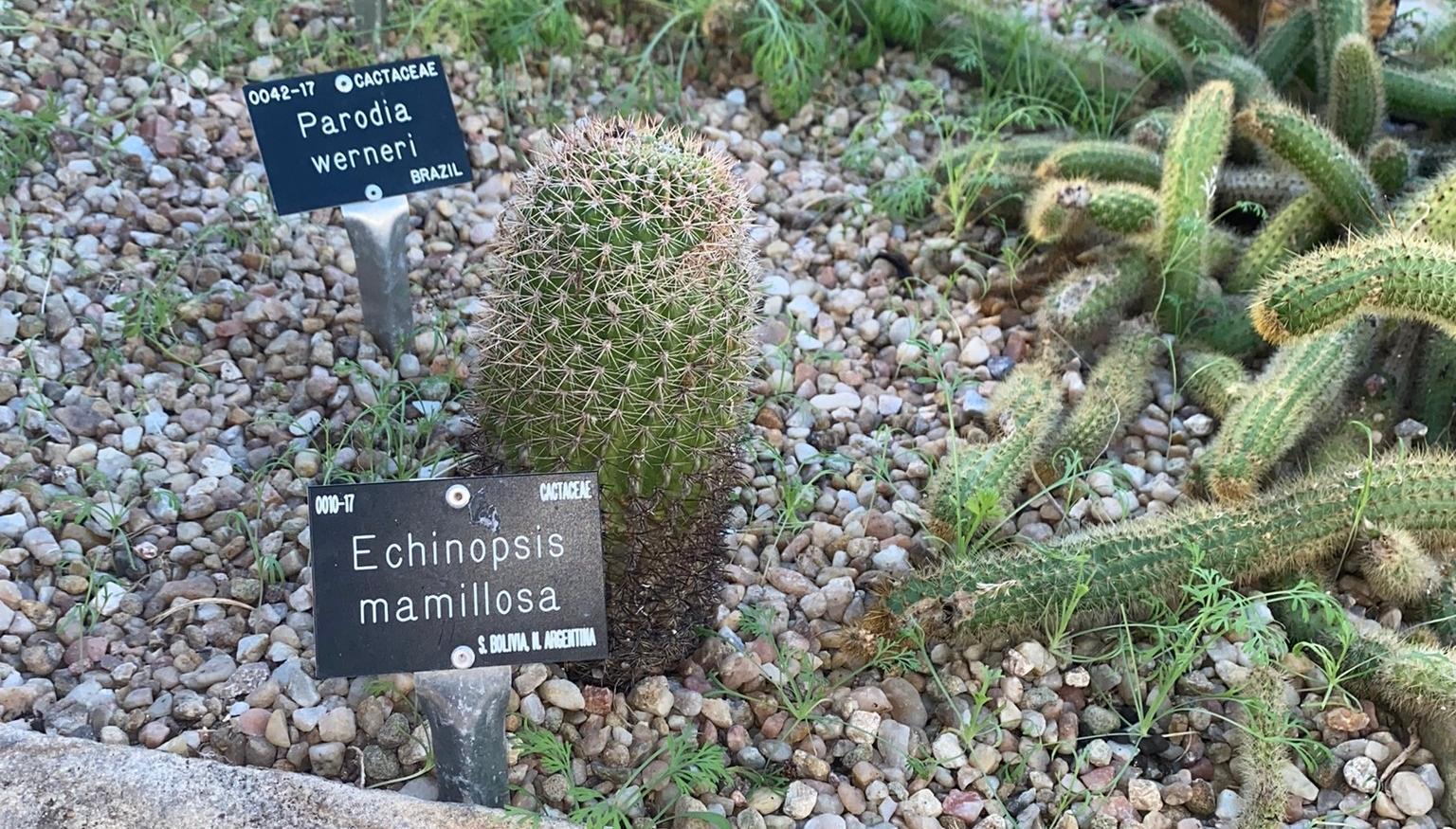Plant Labels
All the different plants around the garden are labelled. This provides a variety of fascinating information, from the plant’s scientific name through to the expedition which collected it. The labelling system is very detailed and systematic, and can be confusing at first! This page will help you unravel the labels, in order to discover more about our wonderful plant-life.

What’s on our labels?
- The numbers in the top left of each label refers to our records. Each new plant is given a four-digit number, followed by a further two on the end which corresponds to the year that we received it.
- The next line, top right, is the family the plant belongs to ("Araceae" = Arum family, "Rosaceae" = Rose family etc.)
- The first line in the middle is the genus name, followed by species on the next line. Sometimes there may be no species, or it may not be fully named and simply called "genus" sp.
- The next lines after these may contain sub-species, written ssp."-------", or a variety or form written in 'inverted commas'.
- Common names may follow, these are usually written (in brackets).
- The bottom right is the country the plant originates from, it may be just one place in a country, i.e. mountains, one country or within a range of countries.
- Sometimes we may write a collector’s number in the bottom left corner. This is a number a collector gave the plant on a collecting expedition and helps keep track of any plants and any later name corrections.

An example of a plant label used at the Botanic Garden
Why do we use Latin?
Latin is used by the scientific community around the world, therefore it’s a shared language. Visit a Botanic Garden in Russia, China, France, Japan - anywhere, and you'll find our labels are the same. Imagine trying to learn the common/local name for some of the plants in our garden.
The Monkey Puzzle for example, is known as "Apenboom" or "Chileense Slangenden" (Netherlands), "Araucaria", "Pehuén", "Pino de Brazos" (Spain), "araucaria del Cile", "pino del Cile" (Italy), "désespoir des singes" ("monkey’s despair") (France), and even here in the UK is known as both "Monkey Puzzle", the "Chile Pine" or "Joseph Bank's Pine" (and it's not even a pine)! Araucaria araucana is its chosen Latin/scientific name, with Botanic Gardens around the world knowing it by that name.


/prod01/channel_4/things-to-do/media/things-to-do/botanic-garden/whatx27s-on/Greenhouse-Family-1920X400.jpg)